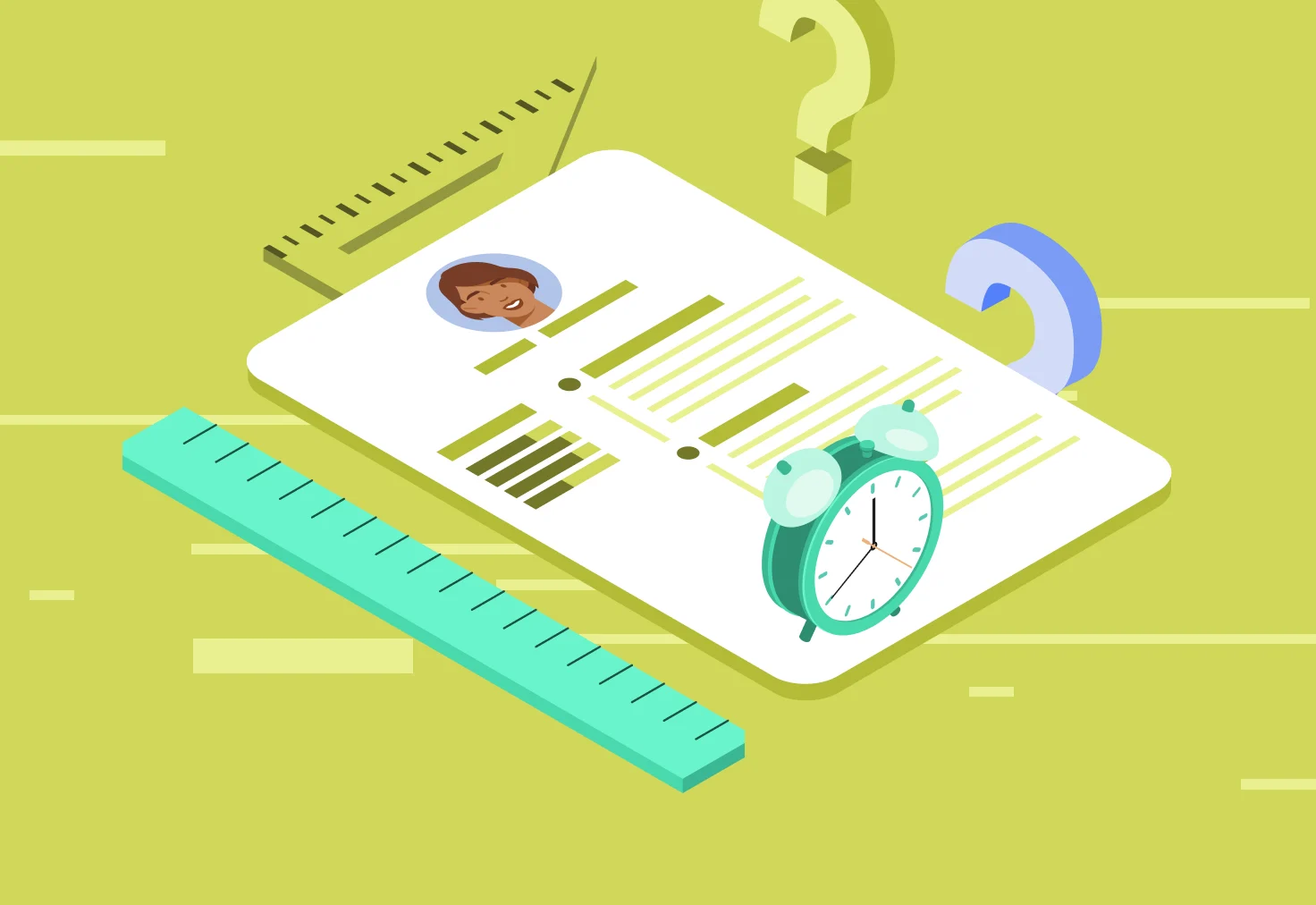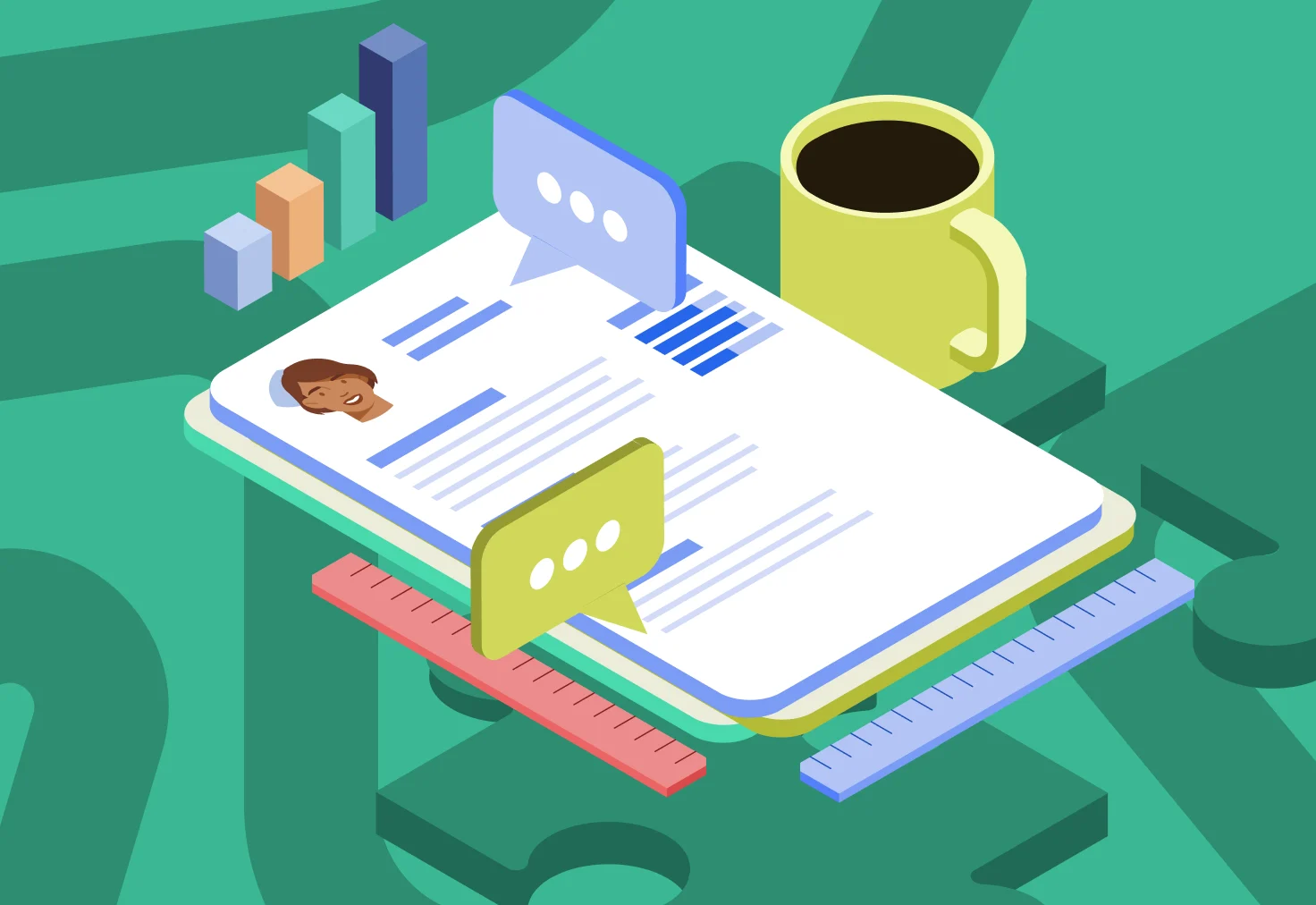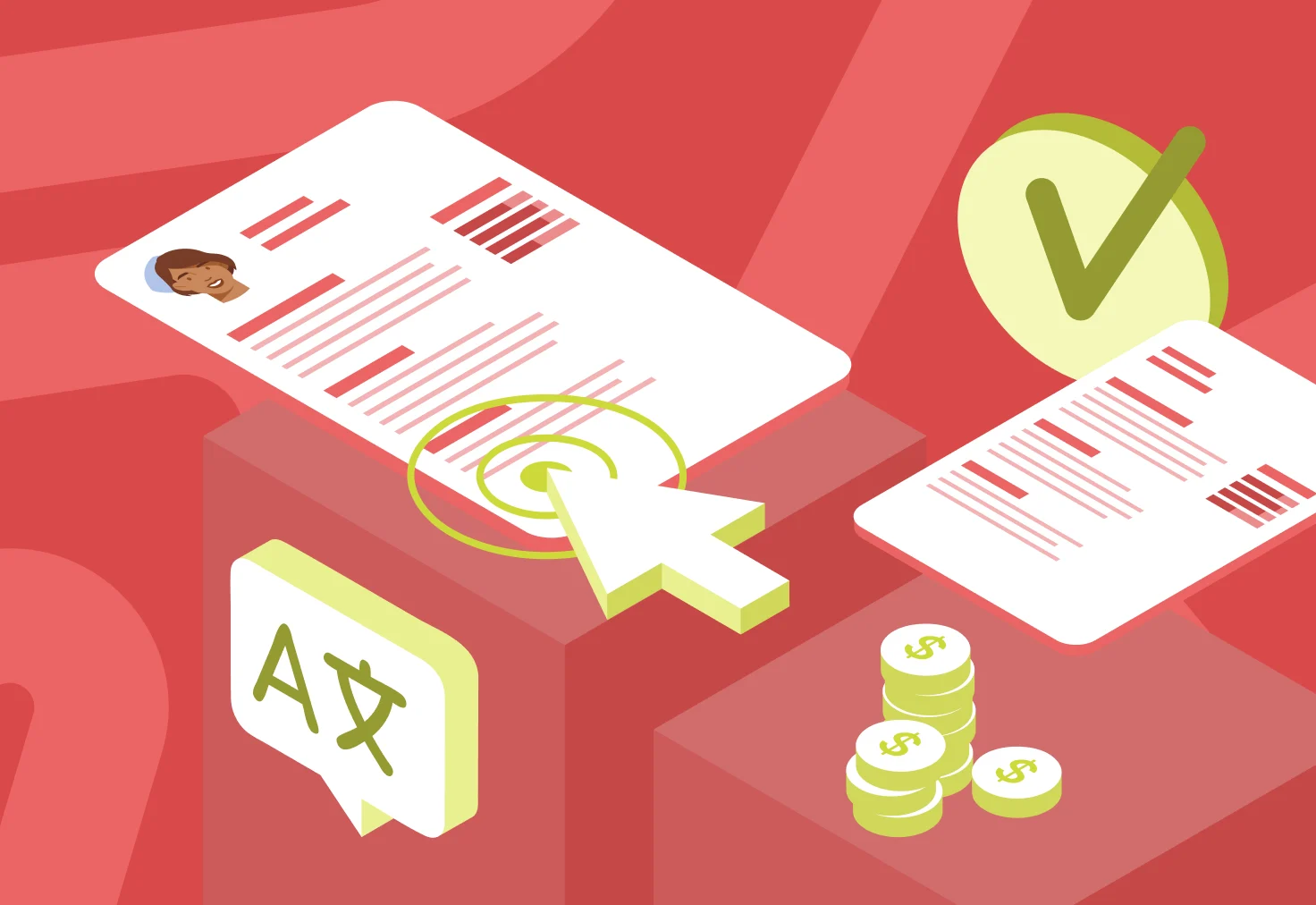A quick search online on how long your resume should be will give you a short and simple answer—one page should be enough.
However, what can you do if you have so much experience that you need more space to showcase everything you find relevant?
The good news is—there’s actually a way for you to add more information to your job application by creating a two-page resume. But a question arises—in what cases can you break the unwritten rule and add an extra page to your resume? When should you avoid it?
Keep reading to find out what the best length for your resume would be and how to make a two-page resume with zero complications when necessary.
Key Takeaways
Usually, a resume should only be one page long since it’s supposed to contain only the relevant experiences that fit the job ad for the position you are interested in.
You can create a two-page resume if you have so much experience that it can’t fit onto a single page or if you’re looking to apply for a managerial or executive job position.
You can format your two-page resume the same way you do it would with a one-page resume. With this in mind, you should stick to using left alignment, reverse chronological order, regular fonts, and standard formatting options.
The first page of your resume should feature the most important (or mandatory) sections. All the additional information you want to include in your document should be on the second page.
How Long Should a Resume Be?

If you’re currently wondering, “Can a resume be two pages long?” the short answer would be yes. Although a one-page resume is usually more favorable, you can make it two pages long if you have a good reason for doing so.
In fact, recent studies have shown that recruiters actually prefer to see two-page resumes. Multiple surveys have shown that they appreciate the work ethic of people who have enough experience to fill up more than one page. Also, recruiters are slightly more likely to choose a candidate for a managerial position who has a two-page resume.
Resume Length Cheat Sheet

A resume length cheat sheet essentially shows you how long should a resume be based on the experience that you have accumulated so far, i.e., depending on whether you’re:
Experience Levels to Determine Resume Length
Entry-level candidate
Professional
Seasoned professional (Expert)
Entry-Level Candidate
If you’re an entry-level candidate, you probably have little to no work experience. For this reason, one page will be enough for you to list all the necessary pieces of information. You usually count as an entry-level applicant if you’re a student, a recent graduate, or someone who finished their studies some time ago but didn’t work after that.
Professional
A professional is a person who has attained up to 10 years of work experience in a specific niche.
If this sounds like you, there’s one thing to keep in mind here—although you’ve had your fair share of professional endeavors, you should still opt for a one-page resume. You definitely have more experience than entry-level candidates, but a single page will still be enough for you to showcase your work history and your most prominent achievements.
Seasoned Professional
A seasoned professional is someone who has a rich work history, which means 10+ years of experience. If you believe you belong to this group of candidates, you can definitely write a two-page resume and properly list all relevant positions you held.
When To Use a Two-Page Resume
There are several situations where you can opt for a two-page resume. The most common ones include the cases when:
Common Cases to Use a Two-Page Resume
You have so much experience that it can’t fit onto one page
You want to apply for a managerial or an executive role
Your Experience Can’t Fit Onto One Page
If you’ve gained a lot of work experience throughout your life and you don’t manage to list everything on one page, you can use a two-page resume. However, make sure that the list of your previous job positions doesn’t exceed 15 years, as any jobs you had before this mark can be considered outdated.
Applying for a Managerial/Executive Role
When you’re applying for a managerial (or executive) position, it’s best to use a two-page resume.
That is because people in these roles need to have strong management skills, which can only be demonstrated through the similar job positions they held. Also, as managers/executives, they will have to take on different responsibilities, so it’s crucial for them to list everything that can help them prove they are the right person for the role.
All this requires a lot of space on their resume, which is why a one-page resume wouldn’t be enough for them.
When Not to Use a Two-Page Resume
As mentioned previously, expanding your resume isn’t always recommended. In fact, it’s a good idea to avoid using a two-page resume when:
Common Cases Not to Use a Two-Page Resume
You’re a recent graduate
You’re an entry-level candidate
You have less than 5 years of experience
If you belong to one of these categories, you probably haven’t had the chance yet to expand your career and experience enough to fill up two pages.
Two-Page Resume Format

If you look for some resume examples of the two-page resume template on Google, you’ll most likely realize that the rules are similar to those for one-page resumes.
Still, the most important guideline when it comes to organizing the relevant information on your resume is to place the most important sections on the first page. If you decide to include some additional sections, they should be featured on the second page.
Important Information on The First Page
The first page of your resume is the place where you should list the mandatory resume sections, such as:
Contact information. This section includes your personal information, such as your first and last name, professional title, email address, phone number, and location.
Resume objective or resume summary. This space allows you to give a brief statement of who you are and emphasize the skills and professional achievements you’re proud of.
Work experience. This section should list any previous job positions that relate to the job you’re applying for, along with dates of employment, company names, and the major results you got while working there.
Education. The education resume section should include your academic achievements (whether it is a high-school or university diploma).
Skills. This section should feature a list of both your soft and hard skills.
Additional Information on The Second Page
The second page of your resume relies completely on how well you format the first one. You can use this space to add any extra information about you that you want the recruiter to have in mind.
Some additional information that you can list on the second page can be:
Languages. Listing them is a great way to show that you are ready to work on international projects or with parties from other countries.
Awards. If the awards you’ve acquired throughout your career are relevant to the job description and highlight your level of expertise, feel free to mention them on your resume.
Certificates. Mentioning the courses you attended and the certificates you obtained will prove that you’ve worked hard to develop additional skills and experience on a specific topic or project.
Volunteering experience. This will make a good impression on recruiters, as they will see that you’re willing to work extra hard for important causes.
Publications. This section should include any journals, articles, books (whether digital or printed), and other written work that you have published so far.
Interests or hobbies. If any of these two relate to the job you’re applying for, you can add them to your resume to give it a more human, personal note.
Projects. Last but not least, if any of the projects you have previously worked on are relevant to the job you’re interested in, you can add them to the second page of your resume as well.
Lastly, to avoid repetition, make sure that the information you write on the second page is not something you have already mentioned on the first page. Not only is it unnecessary, but it also wastes the valuable space you can use for highlighting other important pieces of information.
6 Tips to Help You Create a Two-Page Resume
We’re sure you’ve already figured out almost everything about two-page resumes, but getting some extra guidelines on creating one never hurts.
Here are some good practices and a few things you should avoid when creating your two-page resume:
Two-Page Resume Do’s
Numbering the pages. This way, the recruiters will know what to look at first if you submit the printed pages and they somehow get mixed up.
Keeping the same formatting on both pages. That means that everything from the font type and size to the resume margins should be the same throughout the entire document.
Writing your name on both pages. That way, even if the pages get separated for some reason, the recruiters will still find them and connect them based on the name.
Two-Page Resume Don’ts
Making a double-sided resume. Avoid single-sided printing. Keep all the information on separate sheets—the document will look much neater.
Repeating some details. Keep the information different on both pages so that the content of your document doesn’t get repetitive. If you repeat information, it’s more likely that you need to use a one-page resume instead.
Submitting your two-page resume without a paper clip. If you don’t want any of your pages to get mixed up or lost, add this little detail so that they remain attached to each other.
Free Two-Page Resume Templates
Now that you know all about two-page resumes, let’s look at some examples of this type of document. We have listed some two-page resume templates for free to make it as easy as possible for you to understand what such resumes should look like.
#1. Social Media Manager Resume Template

This is a perfect two-page resume example for graphic designers and social media managers to use. It’s fun and fresh, and it has enough space for you to list everything from your social media handles to any additional skills and hobbies on the second page. You can find this template here.
#2. Creative Two-Page Resume Template

This template is the best fit for designers or freelance writers. Not only does it have a creative reference section, but it also allows candidates to showcase all their abilities in a neat and eye-catching way. There’s also plenty of room on it to list all the relevant awards the applicants may have received or the courses they have attended (along with certifications).
You can find this creative two-page resume template here.
Closing Thoughts
And that’s it!
Whether you’re just getting started on your resume or you’re already no stranger to making them, we hope that this guide has helped you learn more about this topic. When you know everything there is to know about two-page resumes, you can decide more easily whether you should use one or stick to the standard, one-page resume format.
Follow our tips, and you’ll be able to come up with a top-notch resume that will feature all your greatest successes without being afraid that you’ll miss anything due to limitations!
Related Articles
How to Pick the Correct Resume Paper in 2025 [Expert Tips] How to Write Your Address on Your Resume: Tips & Examples How to Create Professional Video Resumes in 2025


